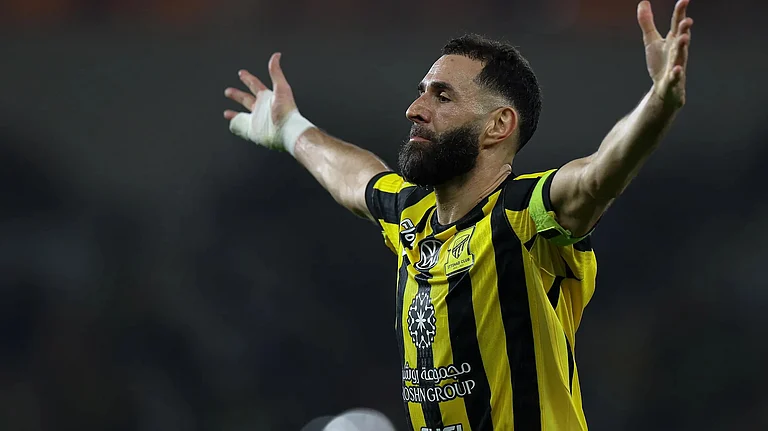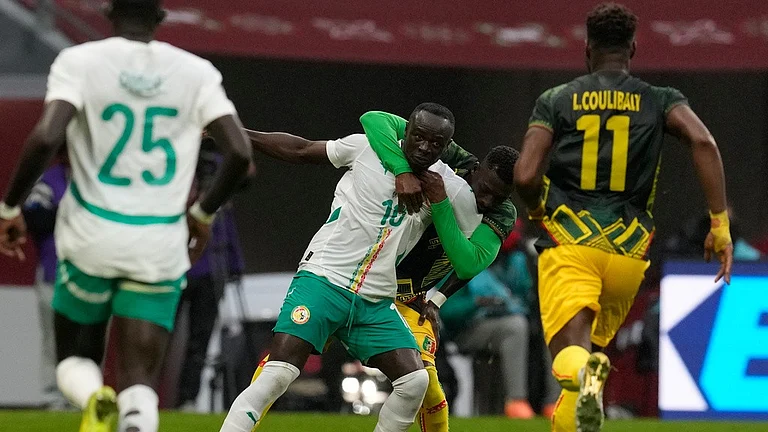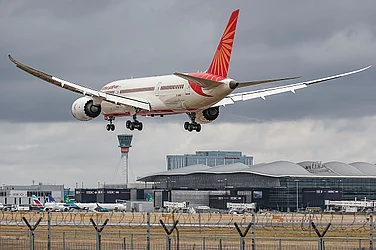In June 1960, when a 57-year-old Angami Naga arrived in London, the British security officials detained him immediately. “How come you can travel to London without a valid passport?” a security official asked. To which the man reportedly replied promptly, “The same way you came to my country, without any passport.”
That was Angami Zapu Phizo, a fierce Naga rebel leader known as the Father of the Nagas. Phizo waged a war against the Indian Union in the hope of forming an independent Naga nation by integrating 3.5 million Nagas and their territories scattered across India’s Northeast and neighbouring Burma.
At a time when India was on the verge of getting independence and had started solidifying its boundaries, Phizo, representing Naga National Council (NNC), the apex Naga organisation formed in 1946, had requested Jawaharlal Nehru not to include the Naga Hills and surrounding areas in the union.
Nehru, who until then had allowed autonomy of the hills, declined Phizo’s request. Seeking self-rule, the NNC had also announced August 14, 1947, as the day of Naga independence. In 1951, it also held a plebiscite in Kohima to assert their demand for a free, independent Naga nation, in which 99.90 per cent of the voters chose a sovereign Nagaland. The message was to leave the Nagas on their own. However, India did not recognise the plebiscite.
In 1952, when India was preparing for its first General Election, Phizo formed the underground Naga Federal Government (NFG) and a Naga Federal Army (NFA) to continue with his separatist movement.
When Nehru sent over 1,000 Indian troops to sabotage the growing separatist movements in the hills in 1956, following the advice of other Naga leaders, Phizo fled the Naga Hills, first to East Pakistan and then to Geneva. He ended up living in exile in the UK for the rest of his life, while trying to garner international support for a ‘Nagalim’. Meanwhile, New Delhi enacted the Armed Forces (Special Powers) Act, 1958, to give security forces more power to contain the insurgency. In 1963, Nagaland was announced as the 16th state of India.
Brigadier (retd) Dr. S.P. Sinha, in his book, Lost Opportunities, wrote, “The new state of Nagaland was formed to take the wind out of rebel’s demand for independence.” He wrote that despite opposition from the Assam government and the Intelligence Bureau, Nehru went ahead, ostensibly because “the Chinese were getting extremely belligerent, and confrontation in NEFA had already taken place”.
In 1990, Phizo died in London. Since then, the movement for Nagalim has been helmed by a breakaway faction of the NNC, the National Socialist Council of Nagaland (NSCN-IM). In 1980, five years after NNC signed the Shillong Accord that accepted the Indian Constitution with the Government of India, the NSCN-IM broke away from the NNC, following sustained military pressure from the Indian government.

Thuingaleng Muivah, the general secretary of NSCN-IM, had joined NNC in 1964 when Lal Bahadur Shastri was the PM. He became the general secretary of NNC a year later. A Tangkhul Naga from Ukhrul district of Manipur, Muivah escaped to Beijing in 1967 along with Thinoselie M. Keyho, another NNC leader, and 132 Naga rebels. In Beijing, they underwent training with Chinese weapons and enjoyed the support of the communist government. After some time, two more leaders, Mowu and Isak Chishi-Swu, joined Muivah in Beijing.
In 1980, when Muivah broke away from NNC and formed the NSCN-IM, the manifesto of the new party reflected Maoist jargon, rejecting a multi-party system and emphasising the “dictatorship of the people through a revolutionary organisation”, besides the liberation of Nagas from the “exploiting class”. The same year, he returned to Nagaland. After his arrival, the Naga Hills saw violence between the two factions—NNC and NSCN. While NSCN was equipped with AK-47s and other Chinese weaponry, the church sided with NNC. In August 1991, 10 policemen escorting the Nagaland Assembly Speaker were killed by NSCN-IM. In December 1991, extremists killed 10 security personnel and a driver in a successful attempt to steal Rs 73 lakh. In February, 1993, Naga rebels ambushed a paramilitary convoy in Manipur’s Senapati area, killing six. Two rebels were also killed in the attack. The list goes on and on.
According to reports, from 1992 to 2000, Naga insurgency claimed over 1,600 lives, of both civilians and Indian Army troops.
Meanwhile, the Indian government kept on conducting counter-insurgency operations in the hills. In 1995, Operation Golden Bird was carried out on the Myanmar border to intercept a large consignment of weapons escorted by NSCN-IM. It resulted in insurgent casualties and seizure of the consignment.
Amid growing counter-insurgency attacks by security forces, the NSCN-IM entered into a ceasefire agreement with the Centre in 1997, agreeing to 11 ground rules that, among other things, barred attacks by NSCN and security forces upon each other, as well as safe havens for armed elements.
In the next 18 years, the ceasefire ensured relative peace in Nagaland. The period also involved intensive negotiations with the GoI, represented by six PMs of different political parties and over 80 rounds of talks.
In 2015, a year after the Narendra Modi-led NDA government had come to power at the Centre, the NSCN-IM signed a Framework Agreement with it, which the former called “historic.”
The Framework Agreement was kept confidential by mutual consent for the next five years, citing security reasons. But it was revealed that a detailed accord would be signed before October 31, 2019. Unfortunately, before that could happen, negotiations collapsed, rendering 25 years of efforts futile.
For the past couple of years, the NSCN-IM has been alleging that the government has been misinterpreting the Framework Agreement of 2015. In March this year, addressing the General Assembly of Unrepresented Nations and People’s Organisations in Washington, Muivah claimed that the Framework Agreement says that both Nagalim and India will co-exist as two entities, sharing “sovereign power,” which will be defined by competencies. “Co-existence means Nagas won’t merge with India but will co-exist with it, maintaining normal entities”.
He also said that the Indian government had recognised the Naga territories and the exclusive right of Nagas over all natural and mineral resources in them. “Since the unique history of the Nagas and the sovereign right of the Nagas are recognised, it is understood that the Naga flag and constitution are ingredients of their sovereignty,” he added.
He was referring to the accord the Centre had signed with NSCN-IM earlier that year, which included a “conditional flag” that could only be used for non-governmental purposes, and did not include a separate Naga constitution.
However, in April 2022, A.K. Mishra, the Centre’s interlocutor in the Naga peace talks, reportedly told NSCN-IM leaders staying in Camp Hebron in Dimapur that the government would not change its earlier position of not allowing a separate flag or constitution for the Nagas. It was conveyed that the groups can have a separate flag only for cultural activities.
The peace talks hit the first deadlock when two years after the Framework Agreement, the Centre invited the Naga National Political Groups (NNPGs), a confederation of seven Naga rebel groups, for talks. Unlike NSCN-IM, NNPGs are not demanding a separate flag or constitution. According to Neingulo Kromei, a rights activist and general secretary of Naga People’s Movement for Human Rights (NPMHR) who has been raising the Naga issue at international fora like the UN, the Indian government hopes to delay the peace process by side-lining the NSCN-IM and negotiating with the NNPGs.
The talks led to the signing of an “Agreed Position”, according to which, “GoI recognises the political and historical rights of the Nagas to self-determine their future in consonance with their distinct identity.”

Experts feel that a separate flag and constitution for the Nagas bears little chance, after the abrogation of Article 370 by the Centre in 2019. However, NSCN-IM has been firm on its stand, creating a major roadblock in resolving one of India’s oldest insurgencies.
Naga leaders and groups are now divided into two main groups—those who are happy with the autonomy provided by the Indian Constitution, and those who are for a sovereign nation. A third group is still in favour of not negotiating with the Indian government, based on the principle that Nagaland was never a part of India, so India has no right to negotiate its sovereignty.
Kromei tells Outlook, “Since the beginning of the Nagalim movement in 1946-47, the mood of the public has remained the same. But over the years, a lot of different categories of people have come to the stage, and a lot of privileged classes created. These few privileged people don’t want to sacrifice their comforts. So they want a solution that is not based on our founding principles.”
“Take what you have got so far,” says five-time chief minister S.C. Jamir (90), the lone surviving signatory of the 16-point agreement between Naga People’s Convention and the Indian government in 1960 that led to the formation of Nagaland as the 16th state of the Indian Union.
Talking to Outlook, Jamir says, “I want to tell those people (who are fighting for an independent nation) that we appreciate whatever you have sacrificed. But let’s be proud of whatever is possible under the present circumstances, whatever is drawn up. Tell the Naga people that we have tried for so many years, but this is the only possible thing that’s available under the present political environment.”
Jamir, who met Prime Minister Modi and Home Minister Shah in May this year, said, “The Home Minister and the Prime Minister are both very clear that they will not agree on a separate flag and constitution. In fact, the Naga people also want autonomy incorporated in the Constitution. My only suggestion is that whatever is decided so far should be put in action. You cannot keep lingering on the issue for decades.”
Notably, Jamir, who has survived several attacks by separatist rebels during his tenures as chief minister, is still criticised for signing the 16-point Agreement.
The Naga Hoho, an apex tribal Naga body whose origin also dates back to India’s independence, feels that the two separate agreements are creating confusion among the people of Nagaland.
Talking to Outlook, K. Elu Ndang, general secretary of the Naga Hoho, said, “When the Framework Agreement was signed, people were given a ray of hope that now the Nagas will have a better life. But that expectation and joy did not last long. Instead of strengthening the Framework Agreement by bringing all groups together, which is inclusive in nature, the Indian government decided to sign another agreement, called the ‘Agreed Position’, with a different group. It came as a shock to all the Nagas, and left us confused.”
He also said that even the Naga Hoho and other civil groups have also been insisting that the Indian government, through its interlocutor, should ensure that any dialogue and outcome should be inclusive. “It can’t be exclusive. It has to be inclusive of all the Naga political groups from all Naga areas scattered across boundaries,” he says.
According to Kromei, Naga groups like NSCN-IM should keep negotiating for peace, as it is the only solution. “Nobody wants to return to the pre-ceasefire situation. So we say, keep talking and find a solution that is honourable for both parties.”
(This appeared in the print edition as "War and Peace")


























